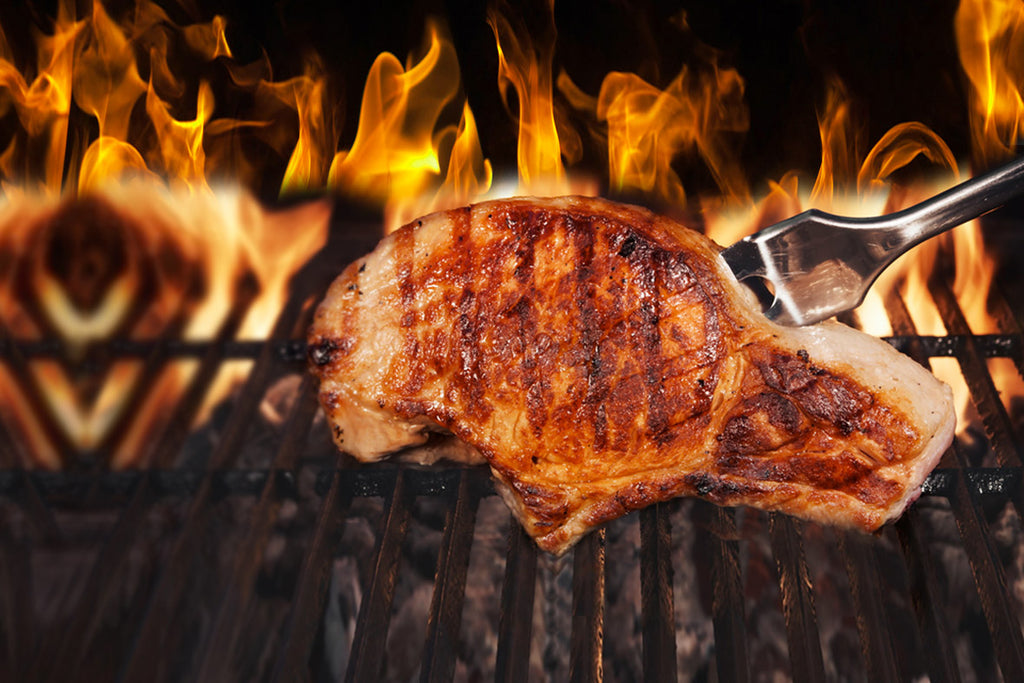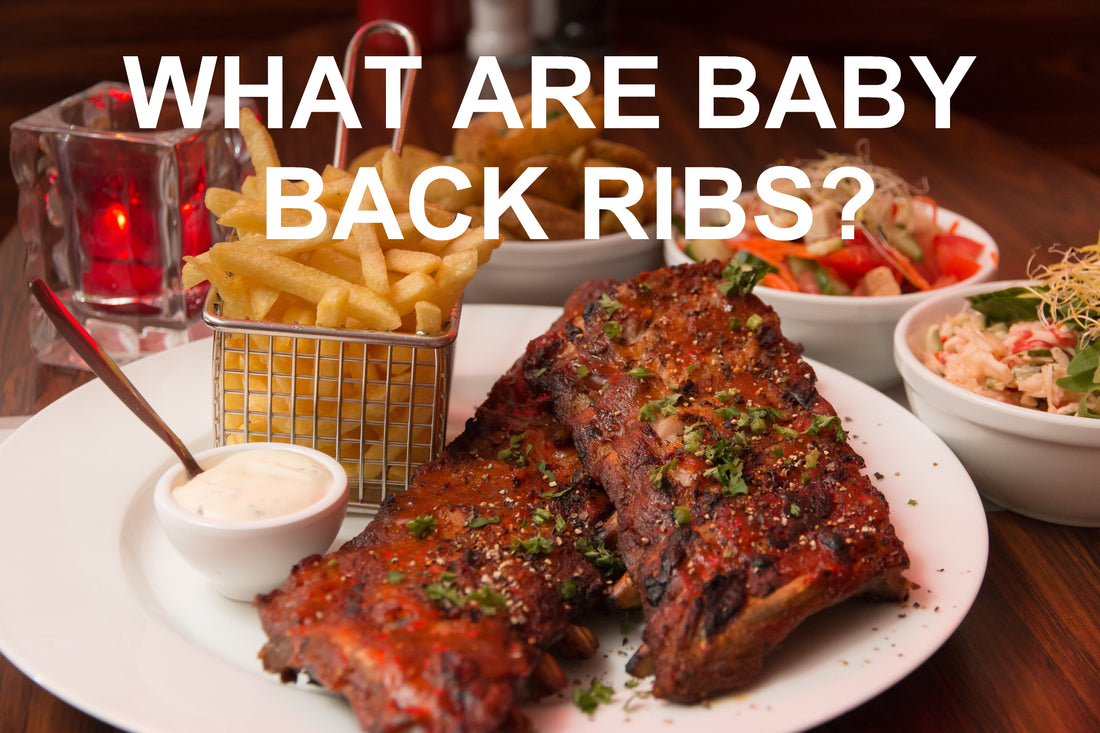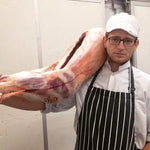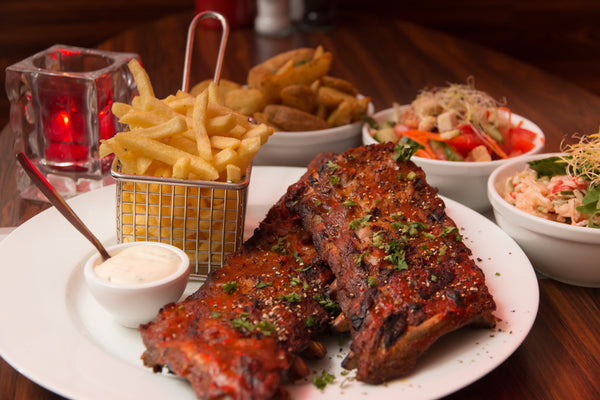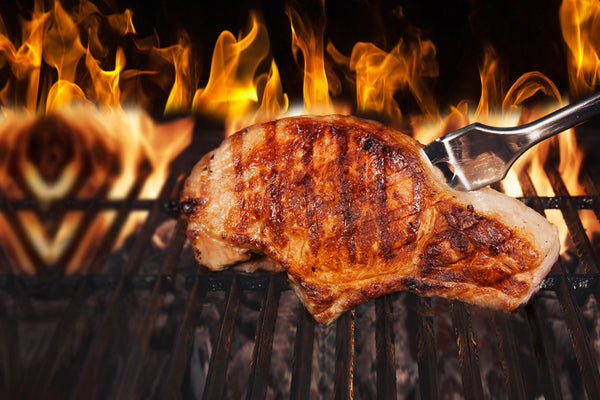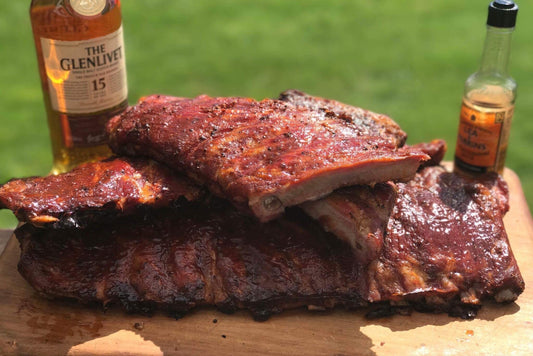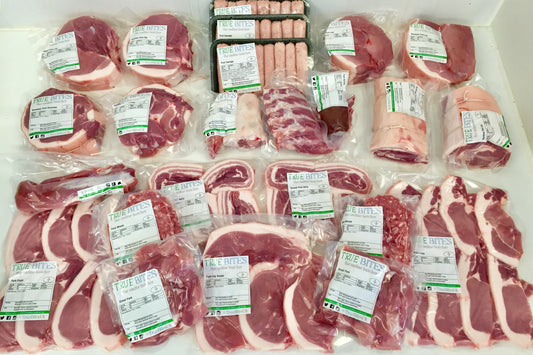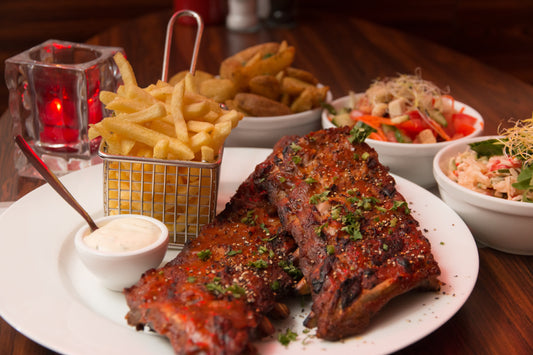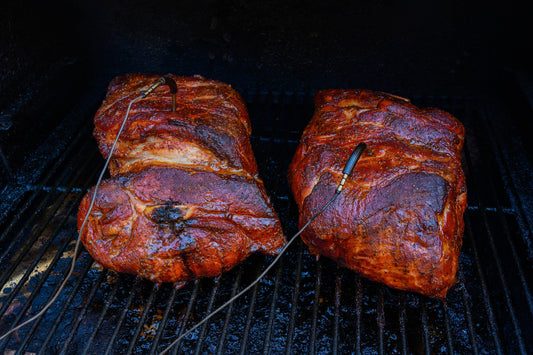Baby back ribs, also known as loin ribs, or back ribs, is the term used to refer to pork ribs (baby back ribs are always pork, not beef, despite some confusion) taken from the loin of the animal. The name has nothing to do with the age of the animal they are taken from, they are actually known as baby back ribs because they are cut much shorter than pork belly ribs (sometimes referred to as spare ribs).

Where do baby back ribs come from?
Back ribs are cut from next to the spine after the loin is removed, which means they are usually only around 10cm wide. A rack of baby back ribs is usually around 12-13 ribs in length, and, unlike pork belly ribs, are the same width all the way along. This is useful to know to help identify which is which; back ribs look more like a strip of ribs, whereas the belly ribs taper down into a point, in a kind of triangle formation. Belly ribs are also much wider that baby back ribs.
What's the difference between baby back ribs and spare ribs?
Baby back ribs are cut shorter than spare ribs (usually referred to as belly ribs), and have thicker bones, but they are also much meatier, leaner and more tender, which is why you usually have to pay more for back ribs than belly ribs. Baby back ribs are cut from the loin of the pig, whereas belly ribs are cut from the belly of the pig.
